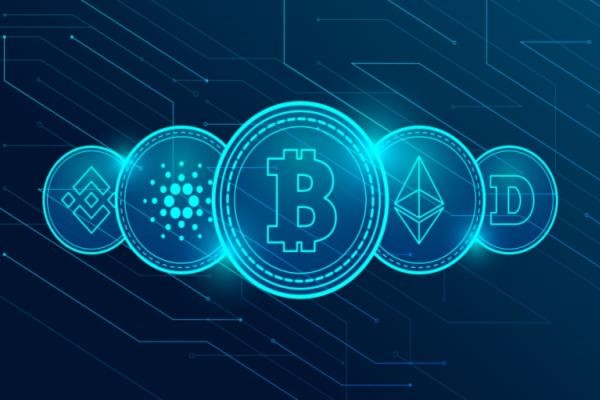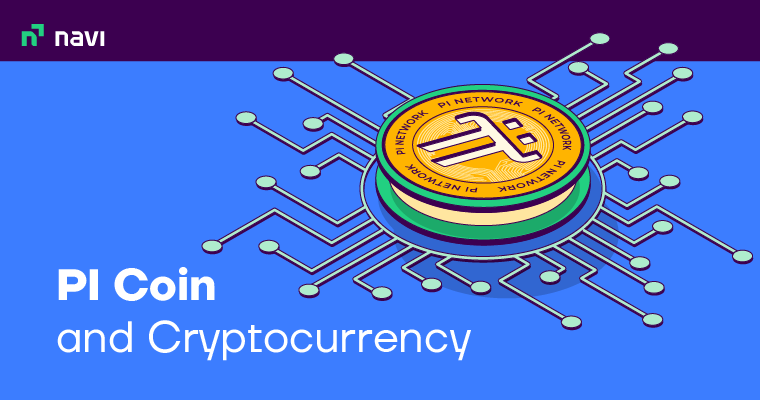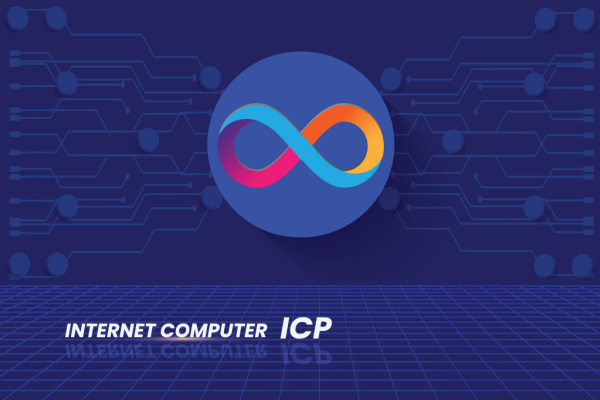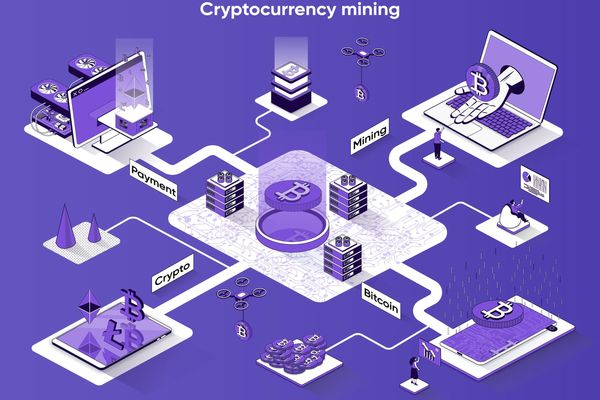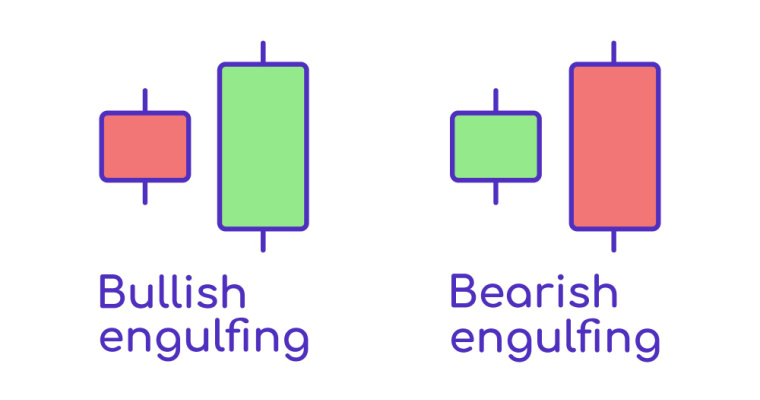What is the Avalanche Network and What is the AVAX Token?
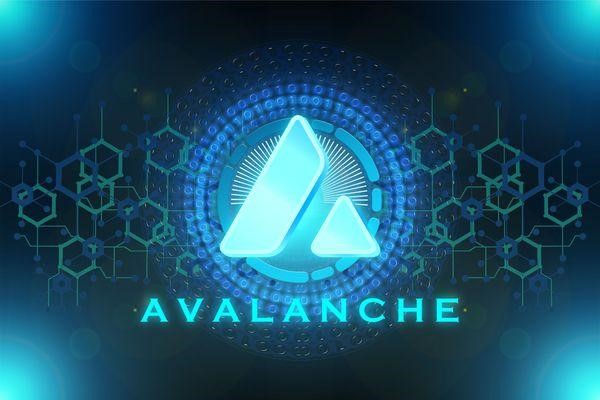
Within a few years, Avalanche influenced the blockchain sector heavily. The ecosystem is projected to get bigger as more projects join the Avalanche network. Avalanche users can launch specialized chains that can operate using their own sets of rules.
Cryptocurrencies have had a poor showing in the first two quarters of 2022, with the market falling far below its all-time high in November 2021 and losing $2 trillion in value. Although, the second half of 2022 offers promise, and Avalanche blockchain is one coin to watch. This blog goes into detail about how Avalanche blockchain functions and the native token (AVAX) of the Avalanche network.
What is Avalanche Blockchain?
Avalanche blockchain is an infrastructure layer that enables users to earn rewards for validating transactions on the network. It is also a smart contract platform – code chunks that auto-execute when certain conditions are met.
Layer-1 blockchains are like the Operating System of the crypto world; there exist layer-2 blockchains, which are like the applications that run on top of the existing base.
These smart contracts and layer-2 networks allow complex relationships, applications, and financial instruments to be executed using code. Developers can build any sort of digital assets on top of the blockchain, even video games.
AVAX by the numbers (as of July 16, 2022):
Price: $19
Price in INR: Rs 1503.250
Market Cap Rank: #15
Market Cap: $5,673,611,340
24 Hour Trading Vol: $723,103,860
Circulating Supply: 283,635,016
Total Supply: 407,727,554
Who Created Avalanche?
The idea for Avalanche was conceptualised by a team of a pseudonymous group of people known as “Team Rocket” in 2018. Later on, the concrete development of the network was carried out by a team of developers at Cornell University led by Emin Gün Sirer, a professor of computer science.
A startup ‘Ava Labs’ was subsequently founded to develop the network.
The Avalanche protocol addresses some of the scalability and efficiency issues that have plagued other proof-of-stake (PoS) protocols. In particular, it is designed to be much more scalable than existing protocols and to allow for a higher degree of decentralisation. Additionally, the protocol is intended to be resistant to censorship and fraud.
Also Read: What is a Crypto Hardware Wallet and How Does it Work?
Why was Avalanche Introduced?
Avalanche was developed to overcome the shortcomings of other blockchain platforms and Layer-1s, primarily Ethereum. Its unique consensus architecture means it’s faster, less costly, and highly scalable. The network can process up to 5000 TPS (transactions per second) with future updates promising infinite TPS. Compared to its biggest competitors, Ethereum can handle only 14 TPS, or Bitcoin, which does 7 TPS.
How does Avalanche Work?
Since cryptocurrency is a currency without a central institution that controls everything, crypto requires a way for the user to be able to trust the currency. Cryptocurrencies use something called a consensus mechanism to build this trust within the community. The first significant cryptocurrency, Bitcoin, uses a proof-of-work mechanism, while others, such as Avalanche, use a proof-of-stake mechanism.
Under this system, users who validate transactions on the network are rewarded with a portion of the transaction fees. The more transactions a user validates, the more rewards they earn. Before the users can start validating transactions and earning rewards, they must ‘deposit’ a certain amount of money, that is, the ‘stake’. If the user makes mistakes or tries to validate fraudulent transactions, they lose their stake.
Avalanche’s protocol is even more unique and designed to be scalable and efficient, allowing for a high degree of decentralisation. It is also intended to be resistant to censorship and fraud.
To ensure that the network remains secure, the protocol uses a mechanism called “gossip.” This essentially means that each ‘validator’’ in the network shares information about newly validated transactions with all the other ‘validators’’. This ensures that all users have the same information and helps to prevent fraud and censorship.
What is the AVAX Token?
The AVAX token is the native token of the Avalanche network. It is used to pay transaction fees and can also be staked by users who wish to earn rewards for validating transactions. When users participate in the above-discussed proof-of-stake process, they receive AVAX as a reward for participating and running the network.
What are the Benefits of Avalanche?
The Avalanche protocol is intended to offer several benefits over existing protocols like Ethereum. Below are some of the benefits:
- Fast & Scalable: The Avalanche protocol is designed to be highly scalable. It can process up to 5,000 transactions per second.
- Secure: The gossip mechanism makes it difficult for bad actors to manipulate the network.
- Decentralised: The Avalanche protocol is intended to allow for a high degree of decentralisation. It does not require users to have a minimum amount of AVAX tokens to validate transactions.
- Governable & Democratic: The Avalanche protocol is designed to be resistant to censorship. This means that it should be possible for users to transact without having to worry about their transactions being blocked or reversed.
- Interoperable: The Avalanche protocol is designed to be interoperable with other protocols and networks. This means that it should be possible for users to transact with each other regardless of which protocol or network they are using.
What is Avalanche Crypto used for?
The Avalanche protocol is primarily used to validate transactions on the network. However, the AVAX token can also be used to pay transaction fees and can be staked by users who wish to earn rewards for validating transactions.
The network itself also allows anyone to deploy their own blockchains, whether it’s for private or public use. In addition, developers deploy smart contracts and build applications on top of it.
How to Buy AVAX Token?
The native token of Avalanche (AVAX) can be bought and traded on various crypto exchanges.
AVAX Price Analysis
The price of Avalanche as of 16 July 2022 was hovering around $20; the coin has shown a biweekly growth of 16% and monthly price growth of 4%. Although this is still far from the top price, it reached on 21st November $144. Still, the decent volumes traded during the current market downturn are signs of healthy growth.
The Future of Avalanche
Despite the volatile market in Q2 of 2022, Avalanche has shown signs of stability. The platform itself is constantly being updated to make it better in every way, making it easier for developers to create creative apps by introducing new use cases.
Also Read: What is Crypto Airdrop and How Does it Work?
Final Word
Factors such as user popularity, superior scaling abilities, useful consensus protocol features, and quick confirmation time have contributed to its growth. Avalanche will also incorporate many distinctive features to broaden the network and enhance the current user experience. Due to its scalability, it’s been tipped to replace Ethereum as the number #1 blockchain smart contract platform. Avalanche is still the fastest smart contract, which will keep more developers opting for the Avalanche network.
FAQs on Avalanche
Ans: Simply put, it’s the native speed of the network combined with lower transaction fees. These two factors, in turn, entice newer participants with smaller capital.
Additionally, the Avalanche network’s unique consensus mechanism offers greater security.
Ans: Since Avalanche is the Layer-1 blockchain, there are various layer-2 blockchain networks built on top of Avalanche wherein you can use AVAX to interact and play with. With these, you can borrow or lend AVAX, stake AVAX to earn rewards, finance debt, verify digital identities and much more!
Ans: Popular Avalanche layer-2 applications include:
Decentralised exchanges like Trader Joe, SushiSwap
Financial Markets like Aave, Yield, Curve, Nexo
Portfolio management apps like DeBank, Ape Board
NFT marketplaces like Topps NFTs, Curate
Before you go…
- Looking for instant 🚀 personal loans 24*7 anywhere, anytime? Get personal loans up to ₹20 lakh starting at 9.9% p.a. Install the Navi app now!
- Or, maybe you’re looking to buy that house you’ve been eyeing 🏠 and you need a loan of up to ₹5 crore. Install the Navi app now and get instant in-principle approval right away! Interest rates starting at 8.60% p.a.
- How about an affordable health insurance policy 👨⚕️ starting at a monthly premium of just ₹235? Install the Navi app now and get your policy in under 2 minutes.
- Instead, want to put your savings into action and kick-start your investment journey 💸 But don’t have time to do research. Invest now with Navi Nifty 50 Index Fund, sit back, and earn from the top 50 companies.
Disclaimer: Crypto products and NFTs are unregulated and can be highly risky. There may be no regulatory recourse for any loss from such transactions.
Mutual Fund investments are subject to market risks, read all scheme-related documents carefully.
This article has been prepared on the basis of internal data, publicly available information and other sources believed to be reliable. The information contained in this article is for general purposes only and not a complete disclosure of every material fact. It should not be construed as investment advice to any party. The article does not warrant the completeness or accuracy of the information, and disclaims all liabilities, losses and damages arising out of the use of this information. Readers shall be fully liable/responsible for any decision taken on the basis of this article.

Customer’s Feedback
No comments found.Top 10 Cryptocurrencies to Invest In 2023 – Best Cryptocurrencies In India
Cryptocurrency is a digital currency which can be used to purchase goods and services without the u... Read More »8 Top Crypto Exchanges in India – Best Crypto Exchanges 2023
Crypto assets are attracting more and more traders to explore the possibilities of their rising mar... Read More »What is Crypto Airdrop – Its Types, Taxation, Benefits and How Does it Work?
Crypto Airdrop is among one of the key strategies that have grown extremely popular since 2017 in t... Read More »What is Pi Cryptocurrency: Network, Value, Price and Future
The Pi Coin cryptocurrency has made the mining of digital currencies accessible for crypto enthusia... Read More »What Is Tax On Crypto In India And How It Is Calculated
Cryptocurrencies are decentralised digital currencies or assets based on blockchain technology, whi... Read More »What Is Internet Computer Protocol (ICP) – Its Price, Investment Benefits And Uses
The ICP crypto is the native token of the ICP Blockchain network, which is used to reward the users... Read More »What Is A Crypto Mining Rig – Its Setup, Types and How To Build One
A Crypto mining rig is a customised personal computer. It features all the essential elements of a ... Read More »Polygon(MATIC): How Does It Work, Benefits and Price Prediction
Polygon (MATIC) is a scaling solution for Ethereum, and MATIC is the name of the token that powers ... Read More »What is GALA Crypto: Review, Benefits and How to Buy GALA Coins?
GALA is an Ethereum-based cryptocurrency that powers Gala Games, a play-to-earn gaming platform. Th... Read More »What is Bullish Engulfing Pattern – its Importance in Trading
Trading in stocks is challenging. That’s why traders use several technical analysis tools, like c... Read More »What is 1inch Crypto – How Does it Work and How to Buy it?
The 1inch protocol is a decentralised exchange (dex) aggregator. Dex is a peer-to-peer (buyers and ... Read More »What is Staking Crypto and How does It Work?
Staking crypto means pledging your cryptocurrencies to the blockchain network to confirm trans... Read More »Top 10 Chit Fund Schemes in India in 2023
Chit funds are one of the most popular return-generating saving schemes in India. It is a financial... Read More »10 Best Gold ETFs in India to Invest in April 2023
Gold ETFs or Gold Exchange Traded Funds are passively managed funds that track the price of physica... Read More »10 Best Demat Accounts in India for Beginners in 2023
Creation of Demat accounts revolutionised the way trades were conducted at the stock exchanges. It... Read More »20 Best Index Funds to Invest in India in April 2023
What is an Index Fund? An index fund is a type of mutual fund or exchange-traded fund (ETF) that... Read More »Best Arbitrage Mutual Funds to Invest in India in April 2023
Arbitrage funds are hybrid mutual fund schemes that aim to make low-risk profits by buying and sell... Read More »10 Best SIP Plans in India to Invest in April 2023
What is SIP? SIP or Systematic Investment Plan is a method of investing a fixed amount in ... Read More »10 Best Corporate Bond Funds in India to Invest in April 2023
Corporate bond funds are debt funds that invest at least 80% of the investment corpus in companies ... Read More »10 Best Bank for Savings Account in India [Highest Interest Rate 2023]
Savings account is a type of financial instrument offered by several banks. It lets you safely depo... Read More »










